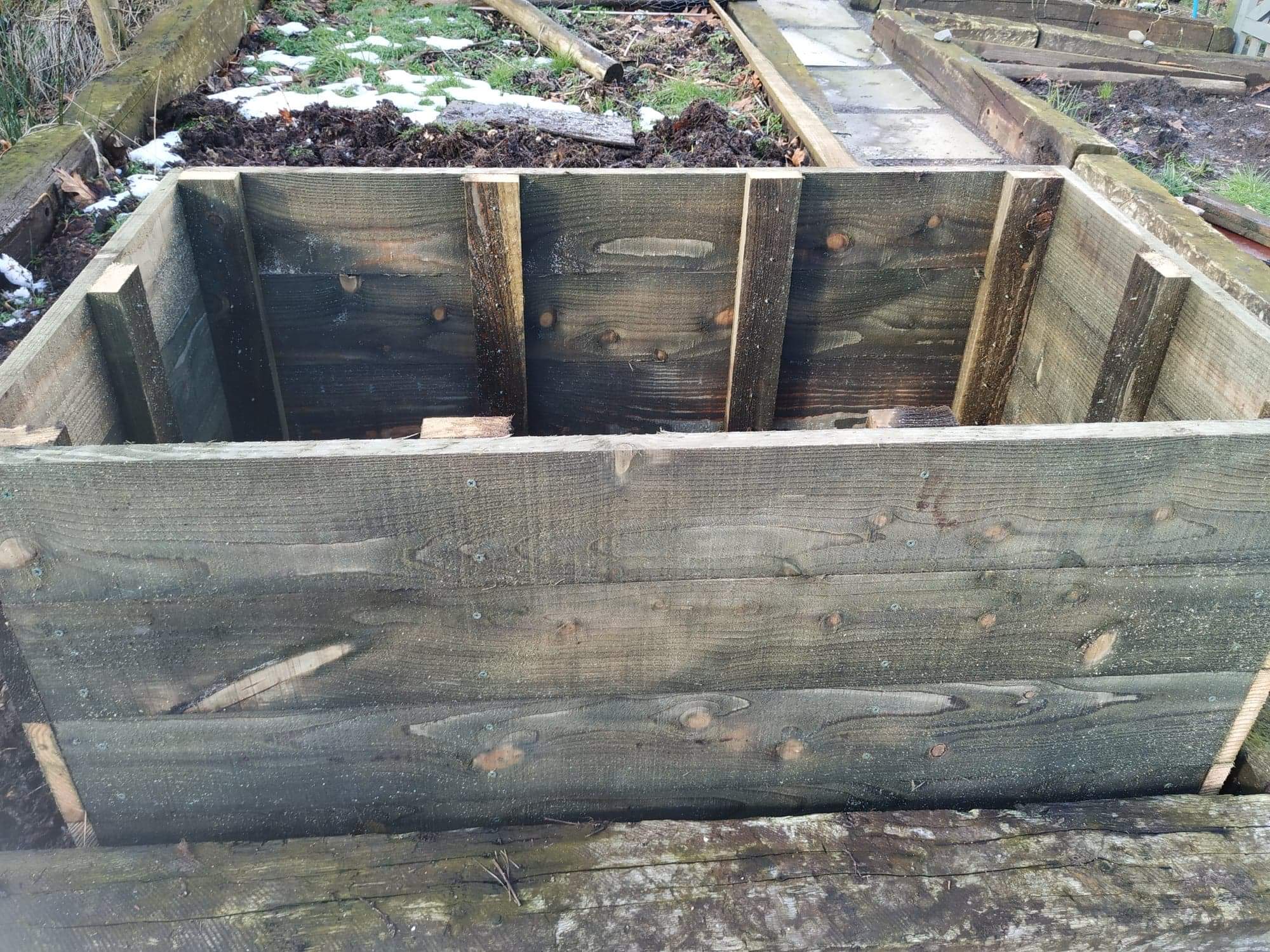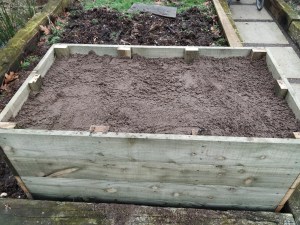
Last year, we planted a lot of carrots, beetroot, parsnips and turnips (swedes to non Scots). As root crops, these are best sown direct as they don’t like to be transplanted. They all germinated quite happily, then it rained and the slugs and snails had the lot. We planted a second batch in pots and planted those out. The slugs and snails had those too.
So, we planted a third batch in pots and surrounded the seedlings with wool when planting them out. This saved about half the carrots and most of the turnips and beetroot. Only one parsnip survived.

What we couldn’t see is that, underground, the carrots were slowly being eaten away. In the end, the harvest was not only poor, it was time consuming cleaning, cutting and preparing what was left. They all went into soup.
There had to be a better way, we thought. Slug pellets are all very well, but they are not that effective and certainly don’t stop the undersoil pests. Nicole did some research and found what we call a carrot box. The one pictured right is such a beast.
On the first non rainy/windy/snowly/sleety day ths year, I fetched the power saw out of hibernation and got to work. I managed to build it just before the next sleet shower hit.
Now, it may just look like a wooden box, and, well, it is. However, the trick is to fill it with sand. Undersoil slugs and snails cannot get through the sand.

Once full of sand, the next step is to “drill” out holes with a drainpipe. These holes can then be filled with compost into which carrots can be sown. This can’t be done immediately. The fresh sand will be loose and unstable. So, we have to wait a few weeks for the rain to cause the sand to settle into a more compact state. Then we can get planting.
We’ll also tie netting around the top to stop slugs and snails cruising up the walls and over the sand to snaffle the young seedlings.
The net result is we’ll be planting fewer carrots but hope to get a bigger crop. If it works, we may build another one and, perhaps, one for parsnips too.
The box needed a lot of sand, by my calculation about half a ton. We had two large, half used bags of sand from previous projects and it looked like we’d have enough. However, we used it all up and although the carrot box looks full (see below), once it settles we’ll probably have to add more. Ironically, we’ll then be taking a lot of it out again to make the planting tubes. But, if it works, we’ll be very happy indeed.






